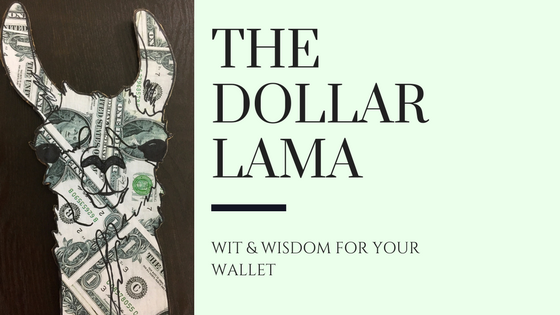As many of you have probably heard, last month, the President extended the forbearance on federal student loan debt an additional 4 months. Initially, borrowers were going to have to resume their student loan payments on 10/1/21. So, borrowers have been given an extra 4 months of reprieve. This means you have four more months to get back on your feet if you are still feeling the financial crunch of the pandemic AND more time to make a plan for your student loan debt.
For More In Depth Information
If you want to more personal finance tips and strategies, including 5 Student Loan Debt Payment Tips, enter your information and click on "Learn More!"
Check your email for FREE gift details!
Now, if you haven’t been able to continue making payments on your student loans during the pandemic, that’s understandable. It has been rough out there for millions of Americans who have lost their jobs or had their incomes drastically reduced because of the pandemic. However, if you have been able to continue making payments during the freeze, that’s good news for you and the reason for this is that federal student loans that are in forbearance because of Covid-19 have not been accruing interest.
That means if you could continue making payments, you can pay down your balance faster since no interest has been accruing or capitalized. This is different from a regular forbearance. If your loans are in a regular forbearance, interest will continue to accrue during the forbearance period and will be capitalized once the forbearance period ends. That’s why paying on your interest when you are in forbearance is a good idea if you can swing it.
So, for the next 4 months if you can start, or continue, making payments on your student loans, I suggest you do it. This is a good idea, for no other reason than to get back in the habit of making that student loan payment every month. Paying down your principal balance faster is just an added benefit right now, a really big benefit that you should be taking advantage of, if you can.
If you aren’t making any student loan payments, you need to think about whether you’ll be able to start making payments again on 2/1/22. There will not be another extension on the coronavirus student loan debt forbearance. There probably won’t be any widespread cancellation either (but that’s a topic for another time). That means you need to get ready because student loans are coming back, like the Terminator!
If you can’t resume making the same payment amount you were paying prior to the pandemic, don’t panic. You have some options, especially with federal student loan debt. Here are my suggestions for getting your federal student loans under control as of 2/1/22 if you can’t make your pre-pandemic payment amount.
- The first thing you need to do is get on the phone with your servicer and ask them to enroll you in an income driven repayment plan (aka IDR). You should know that if you enroll in an IDR, it’s going to take you longer to pay off your loans and you will likely pay more in interest BUT, your payment will be based on your income so, if monthly cashflow is your main concern right now, an IDR may be the way to go. Now, IDRs are complicated. If you need help with them, you can check out my Student Loan Debt 101 webinars which are on-demand in the store on my website at newcashview.com/store. They are cheap, people, and they can help you figure out what IDR will work best for you so make sure you buy yours today.
- You also might qualify for a economic hardship deferment. That means you can’t resume making your payments right away because your current income isn’t back to pre-pandemic levels. Hardship deferments are great because interest doesn’t accrue on your subsidized loans while you are in deferment for an economic hardship. Periods of economic hardship ALSO COUNT as qualifying repayment periods for IDR forgiveness!
- You can always apply for another forbearance. Be advised that you will accrue interest on your subsidized AND unsubsidized loans and that interest WILL BE capitalized, meaning added to your principal balance, once the forbearance period is up. And that, my friends, is how borrowers take out $20k in loans and wind-up owing $80k or more, because no one tells borrowers how interest on student loan debt works.
- You might want to consider consolidating all or a few of your federal student loans. The reason I keep saying “federal” student loans is because I’m talking specifically about federal student loans that are issued by the Department of Education. There is no such thing as re-financing federal student loans (unless you refinance them with private student loans and once you are outside of the federal student loan debt system, you can’t get back in and you lose whatever benefits you had with federal student loan debt). Okay, so you can’t refinance federal student loans but you can consolidate all or a few of them. Again, you’ll have to speak with your servicer to see if consolidating will actually lower your payment. Generally, a consolidated loan will use an average of the interest rates of the loans you consolidate but it may be the only way to get you into an IDR. Again, if you need more specific help with this, my College Student and Graduate Student Loan Debt 101 on-demand webinar can help you!
- Contact your servicer and ask them to re-calculate your IDR payment if you are already in an IDR. They do this using your AGI so if you can file your taxes early and use your AGI, they might be able to get your payment down to a more manageable amount.
I hope these tips have helped you avoid panicking and given you some ideas on how to deal with your upcoming student loan payments. Federal student loan debt does not have to be a lifetime burden. You just have to be smart about how you manage it and it can become the best financial investment you’ll ever make.
P.S. Make sure you check out my online courses, books and resources, too! Investing in your money management education is an investment in yourself. That’s the best investment you’ll ever make, I guarantee it!. Don’t forget my weekly Facebook live videos on Facebook.com/newcashview, Instagram @joyalfordbrand and on my YouTube channel NCVTV. You can catch me on Thursday evenings after 9:00 (Eastern Standard time), for my weekly NCVTV episode. They are packed full of useful and entertaining money management information! If you’ve missed any NCVTV episodes, you can see the latest on newcashview.com or you can check out my YouTube channel and get caught up! You can get there by clicking here. Remember, like and share the NCVTV videos on Facebook and all your social media platforms, so others can benefit from them, too!

